Search the Special Collections and Archives Portal
Search Results
Charles Santelman oral history interview
Identifier
Abstract
Oral history interview with Charles Santelman conducted by Catrina J. First on November 17, 2002 for the Public School Principalship Oral History Project. In this interview, Santelman reflects upon his 36-year career as a teacher and administrator with Nevada’s Clark County School District (CCSD). He discusses his teaching experience in Sandy Valley, Nevada, and compares it to teaching in Las Vegas, Nevada. He also describes the process by which he became an administrator and his working relationship with teachers and parents, and offers suggestions for individuals interested in pursuing school administration.
Archival Collection
Emilio Muscelli oral history interview
Identifier
Abstract
Oral history interview with Emilio Muscelli conducted by Claytee D. White on November 25, 2008 for the Boyer Early Las Vegas Oral History Project. Muscelli discusses his life in Italy, coming to America in 1948, and working at the Copacabana nightclub in New York. He also discusses his boss there, Jack Entratter, who brought him to Las Vegas, Nevada when he opened the Sands Hotel and Casino in 1952. Muscelli then discusses working as a maitre d' for many years at the Sands and becoming friends with Bobby Darren, Cary Grant, and many other celebrities.
Archival Collection
Alma Vining oral history interview
Identifier
Abstract
Oral history interview with Alma Vining conducted by Christine Carrera on April 10, 2006 for the Public School Principalship Oral History Project. In this interview, Vining reflects upon her 30-year career as an elementary school teacher and administrator with Nevada’s Clark County School District (CCSD) from the 1970s to the 2000s. She describes the process by which she became an administrator, her regular responsibilities, and challenges that she faced. She also discusses school district programs such as No Child Left Behind, bilingual education, and school integration.
Archival Collection
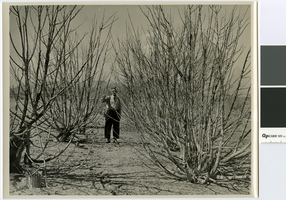
Photograph of a St. Thomas resident standing near dry hedges, 1945
Date
Archival Collection
Description
Hedges in St. Thomas
Transcribed Notes: Transcribed from photo sleeve: "Hedges planted by prosperous residents of St. Thomas. The trees in this photograph were under more than 50 feet of water for a period of about 7 years."
Image
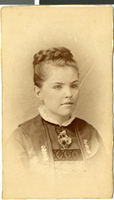
Photograph of Cressa Spring Hancock, Iowa City, Iowa, circa 1882
Date
Archival Collection
Description
Image
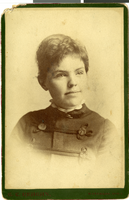
Photograph of Cressa Springer Hancock, Iowa City, Iowa, September 9, 1885
Date
Archival Collection
Description
Image
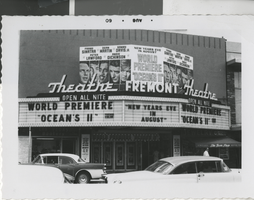
Photograph of the Fremont Theatre marquee advertising "Ocean's 11," Las Vegas (Nev.), August 1960
Date
Archival Collection
Description
Image
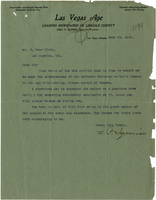
Letter from C. P. Squires to J. Ross Clark, July 24, 1909
Date
Archival Collection
Description
Text

Lawrence Chiu Hill oral history interview: transcript
Date
Archival Collection
Description
Oral history interview with Lawrence Chiu Hill oral history interview conducted by Cecilia Winchell, Nessa Concepcion, and Stefani Evans on November 8, 2021 for Reflections: The Las Vegas Asian American and Pacific Islander Oral History Project. Lawrence "Larry" Chiu Hill shares his experiences growing up in Taiwan and immigrating with his family to South America, then moving to Corpus Christi, Texas, and finally Las Vegas, Nevada. He discusses his education at University of Nevada, Las Vegas as a Political Science graduate and his career path moving from casino gaming into the practice of law. Lawrence manages his own firm, Lawrence C. Hill and Associates, and talks about his work, his family, and the community he has created in over two decades of living in Las Vegas.
Text

